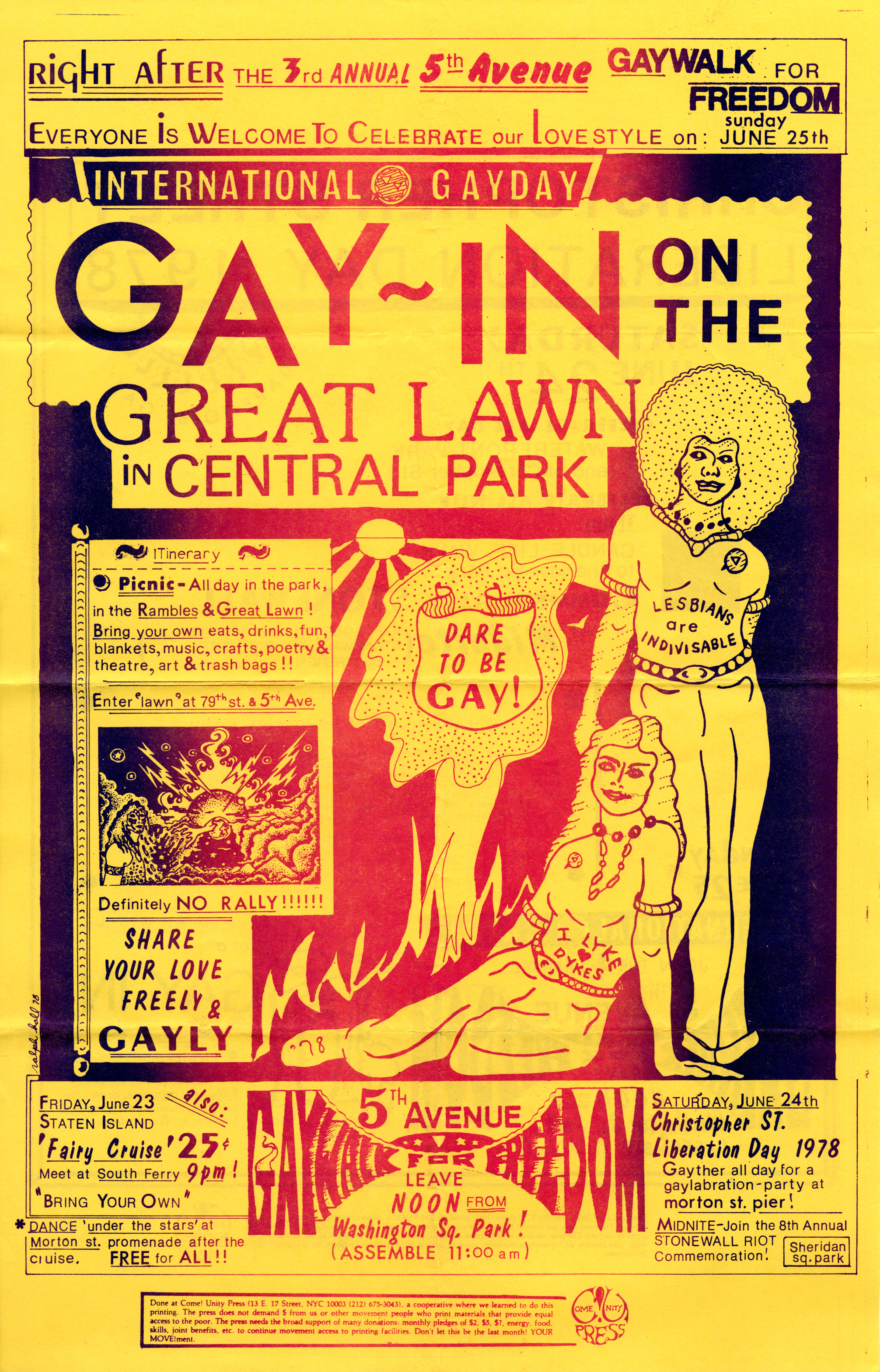The idea for National Coming Out Day was proposed by Rob Eichber and Jean O’Leary, who was then head of the organization National Gay Rights Advocates. The date, October 11, was chosen to commemorate the March on Washington for Lesbian and Gay Rights, held on October 11, 1987. A few months later, a group of over 100 lesbian, gay, bisexual and transgender (LGBT) activists from around the country gathered in Manassas, Va., about 25 miles outside Washington, D.C. Recognizing that the LGBT community often reacted defensively to anti-gay actions, they came up with the idea of a national day to celebrate visibility and coming out.
But even before National Coming Out Day was created over 20 years ago, there was a long history of LGBT activism and movements to increase the visibility of gay men, lesbians, bisexuals, transgender, and queer individuals (and far more identities beyond just those I’ve listed here as well!) While visibility of the LGBT community in society is increasing, visibility of LGBT history is unfortunately not. Bayard Rustin should be a household name. While the Stonewall Riots are generally lauded as the birth of the gay rights movement, fewer know of the riots at Compton’s Cafeteria in San Francisco in August 1966, or that the first recorded queer sit- in actually took place in 1965 at Dewey’s, a coffee shop and lunch counter in Philadelphia:
According to an article by Doug Ireland from In These Times,
“The establishment began refusing service to this LGBT clientele, prompting a protest rally on April 25, 1965. Dewey’s management turned away more than 150 patrons while the demonstration went on outside. Four teens resisted efforts to force them out and were arrested and later convicted of disorderly conduct. In the ensuing weeks, Dewey’s patrons and others from Philadelphia’s gay community set up an informational picket line protesting the lunch counter’s treatment of gender-variant youth. On May 2, activists staged another sit-in, and the police were again called, but this time made no arrests. The restaurant backed down, and promised “an immediate cessation of all indiscriminate denials of service.”
Unfortunately, violence against the LGBT community continues in the present day. The 2010 gay pride parade in Belgrade, Serbia was marred by violence between police and protestors. And in the United States, far too many gay teens have committed suicide in the past month as a result of continued bullying and harassment in schools. Sex columnist Dan Savage has launched a new advocacy campaign on YouTube called “It Gets Better,” in order to give hope to gay teens who are experiencing harassment and bullying.
From his column explaining the project:
“Billy Lucas was just 15 when he hanged himself in a barn on his grandmother’s property. He reportedly endured intense bullying at the hands of his classmates—classmates who called him a fag and told him to kill himself. His mother found his body. Nine out of 10 gay teenagers experience bullying and harassment at school, and gay teens are four times likelier to attempt suicide. Many LGBT kids who do kill themselves live in rural areas, exurbs, and suburban areas, places with no gay organizations or services for queer kids. “My heart breaks for the pain and torment you went through, Billy Lucas,” a reader wrote after I posted about Billy Lucas to my blog. “I wish I could have told you that things get better.” I had the same reaction: I wish I could have talked to this kid for five minutes. I wish I could have told Billy that it gets better. I wish I could have told him that, however bad things were, however isolated and alone he was, it gets better.
But gay adults aren’t allowed to talk to these kids. Schools and churches don’t bring us in to talk to teenagers who are being bullied. Many of these kids have homophobic parents who believe that they can prevent their gay children from growing up to be gay—or from ever coming out—by depriving them of information, resources, and positive role models.”
Nor is gay history taught in the majority of schools. As the postcard puts it, “History has set the record a little too straight.” For the most part, students aren’t taught that so many authors, artists, engineers, doctors, politicians, and visionaries in our society that played HUGE roles in history, both in the US and around the world, were gay. And the only gay people we do hear about in history seem to always be the ones who died, such as Harvey Milk, or in relation to the AIDS crisis.
As State Senator Sheila Kuehl pointed out in 2006 regarding textbooks in California, “According to the textbooks now, no gay person ever made any contribution to anything in California.”
With so much left out of textbooks and the curriculum, even in higher education, archival resources play an invaluable role in uncovering hidden histories. The Dodd Research Center has a large collection of materials documenting gay and lesbian history in the United States. The LGBT Studies Subject Guide has information on finding archival sources both at UConn as well as a list of repositories around the country with significant LGBT history collections. So please do come to the archives, and discover the richness of LGBT history!

